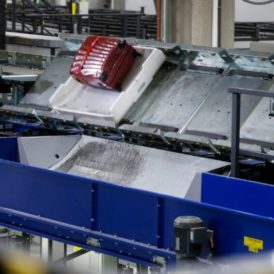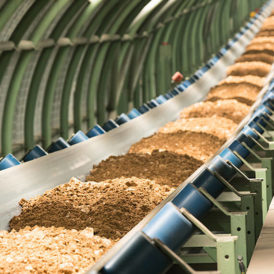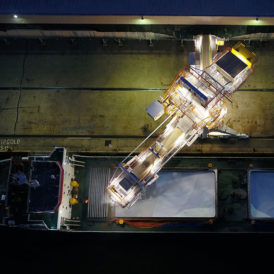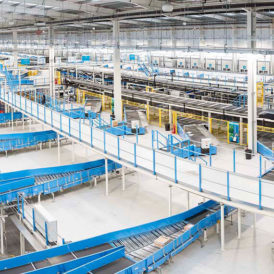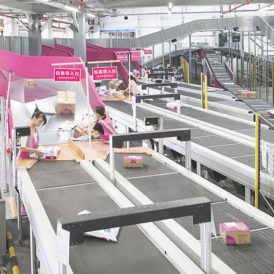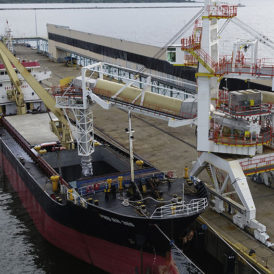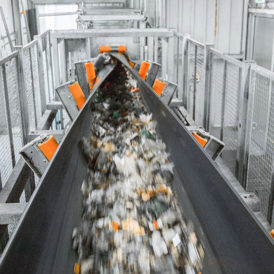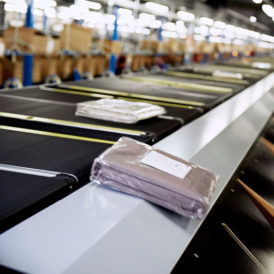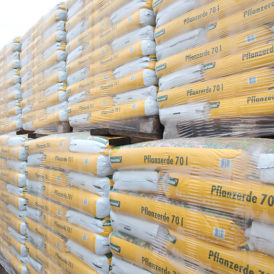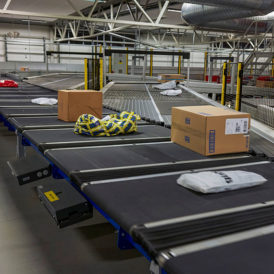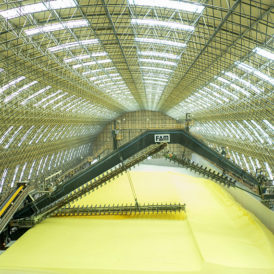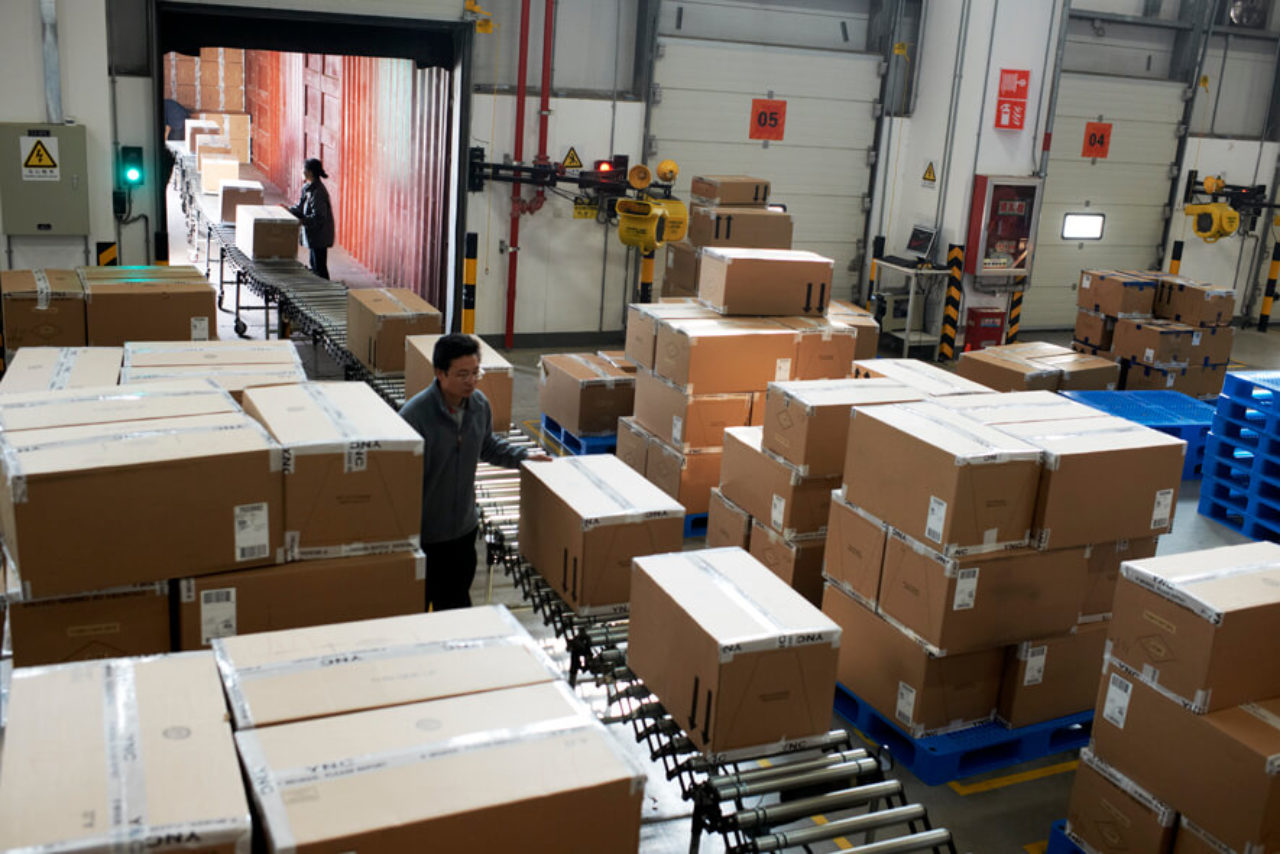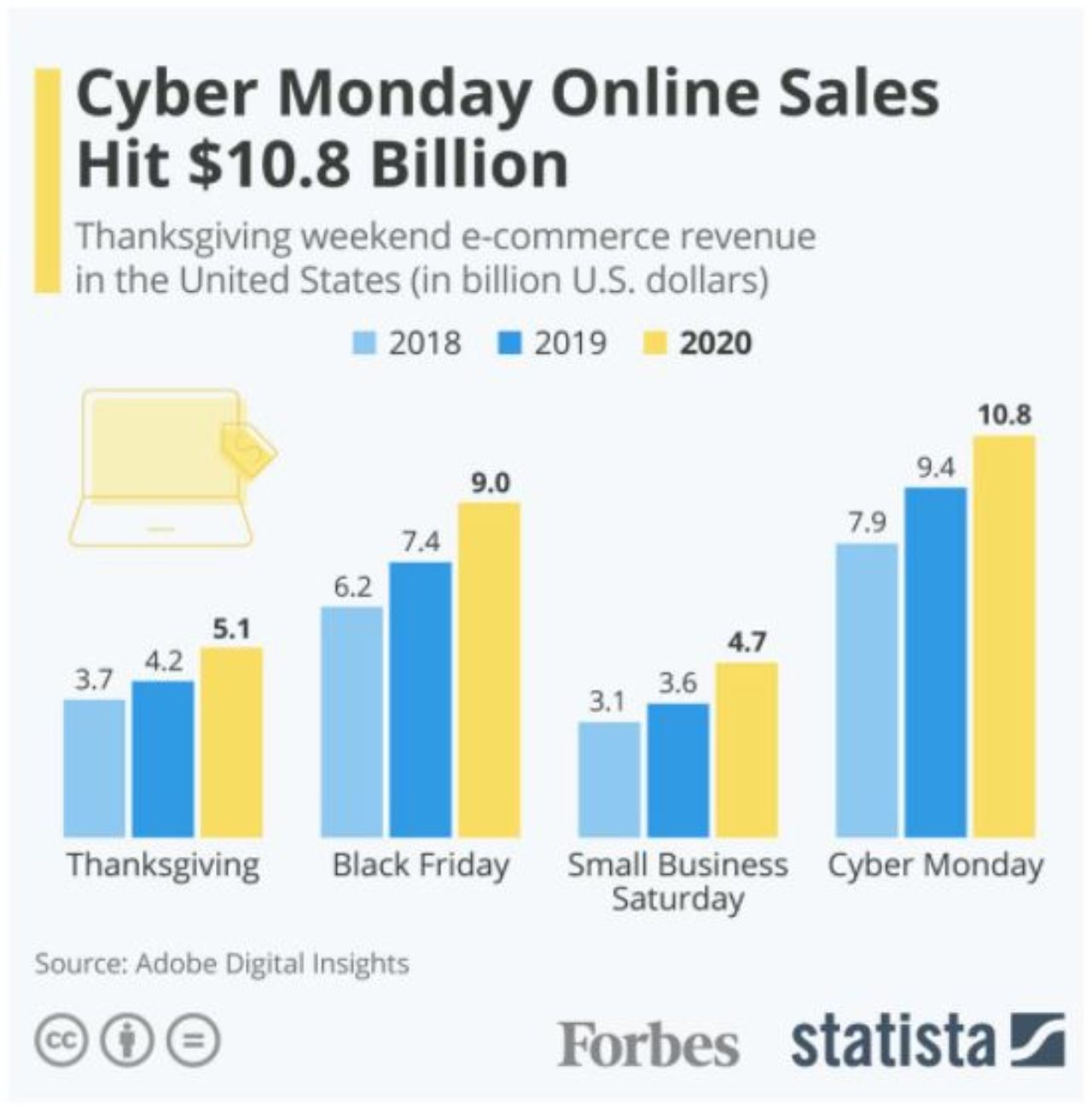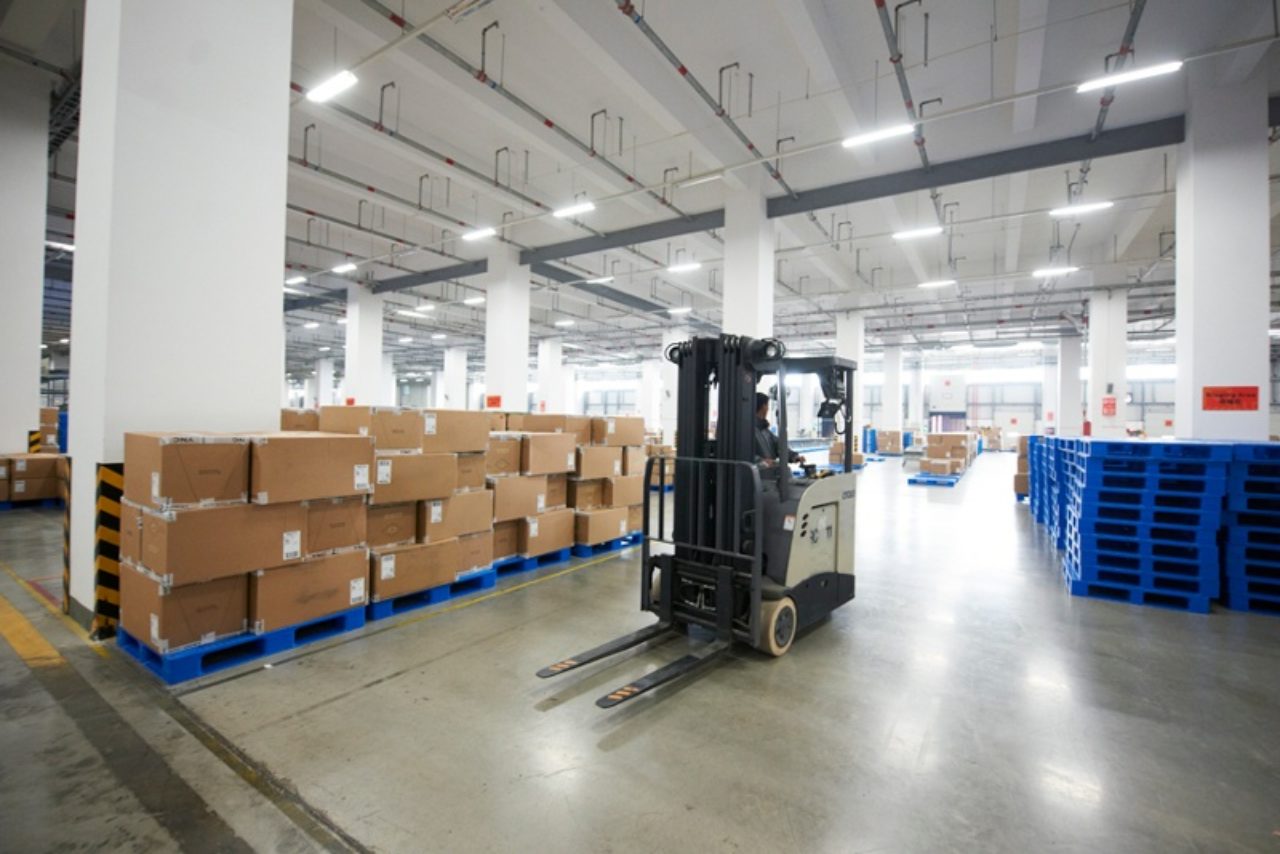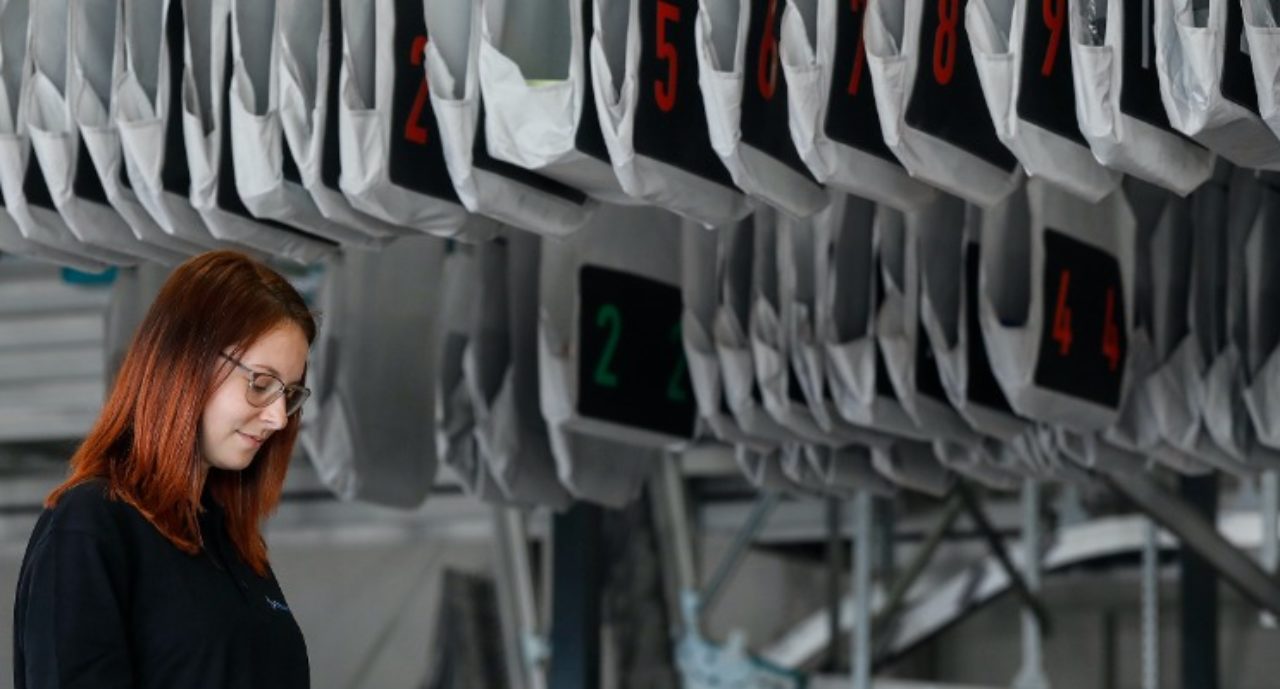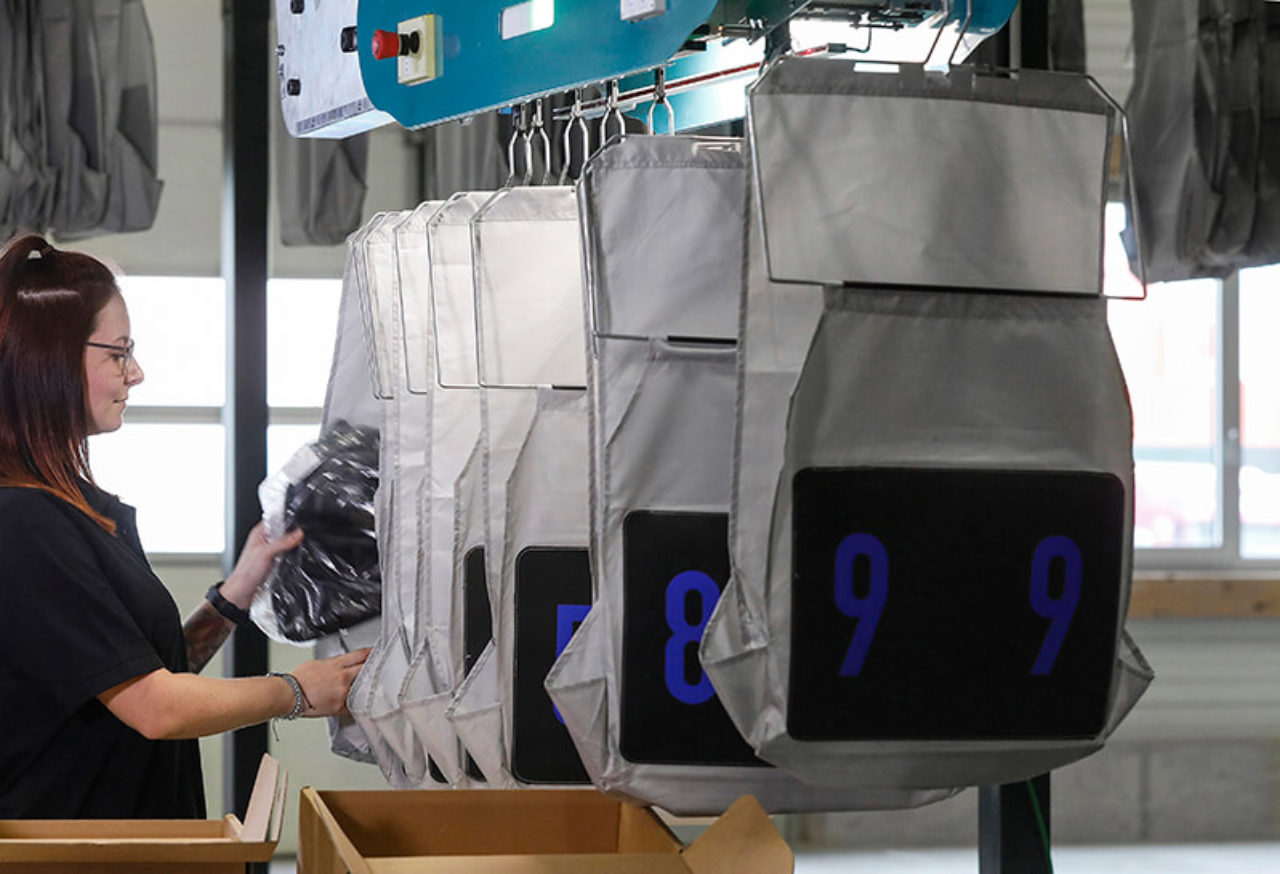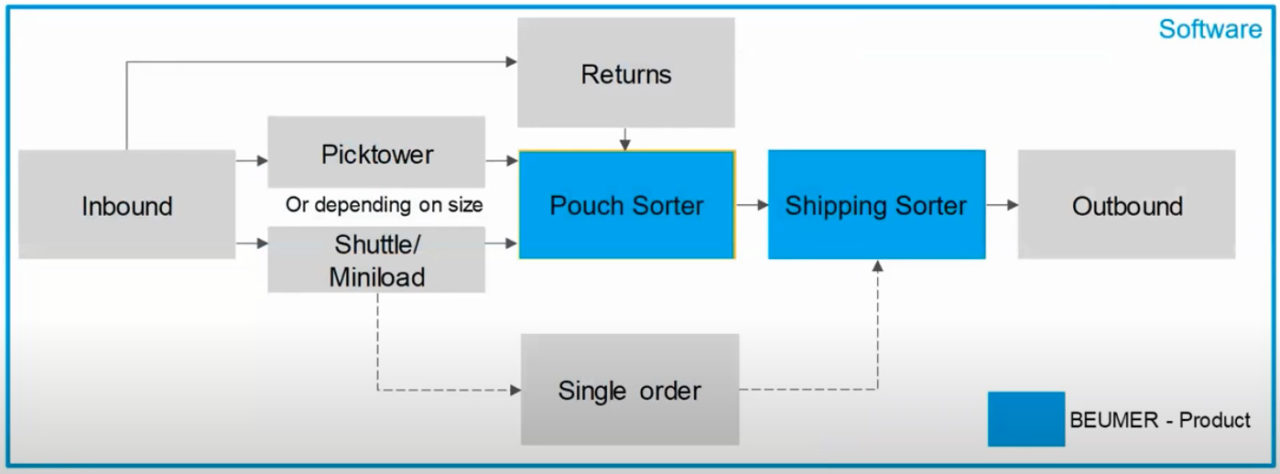What a modern sortation system should be able to do
A modern system should provide features that enable 3PL providers to operate in a world of uncertainty and volatility. It should be able to:
- Increase batching sizes: It should increase picker productivity, with workers being able to pick multiple items in one go. The use of a system buffer can increase the batch factor, while simultaneously reducing tote movement in a GTP system by increasing the accession rate and batch factor per tote.
- Increase flexibility: A system should enable flexible reactions to changes in business and customer behaviour. The use of a system buffer allows 3PLs to better handle changing order profiles, easily shift from D2C to B2B and from high to low volumes.
- Flatten peaks to handle volatility: Look for a system that enables the workload to be spread and that require fewer resources. It should allow workers to pre-pick items and store them in a buffer, where they can be immediately available for shipping. And it should be possible to pre-pick items over a longer period of time so that the 3PL provider doesn’t need to hire as many short-term workers.
- Handle returns efficiently: A modern system should move returns directly into the sortation system, eliminating the need for excess storage and picking and making the items available for immediate resale. There are multiple solutions for handling returns, depending on the setup and requirements of the 3PL provider.
- Flexible and extendable design: A system should be extendable and flexible for different product sizes and shapes. Ideally it should be able to be adjusted to specific needs or projects and be used for fragile objects.
- Save floor space: Look for a system that can fit into the existing space and make use of any space available, such as overhead space.
- Lower maintenance and spare parts needed: The system must be designed for minimum maintenance and minimum storage of spare parts.
Realise a faster ROI: The system should lead to reduced performance required of GTP systems, increase equipment optimisation and thereby lower the investment needed.
Conclusion
Significantly heightened demand in online fashion sales may sound like business development opportunities for 3PLs. However, if they fail to provide the service that matches corporate fulfilment standards, 3PLs run the risk of losing customers. To prevent this and stave off competition, 3PLs need solutions that provide flexible and adaptive responses. If they invest in automation at an early stage, their ability to grow, serve more brands and handle a higher volume of goods will justify the investment.
The pouch system and its buffering features can provide 3PLs with the agility needed to react to changing customers types order profiles, while being able to realise a speedy return on investment. No matter what, it’s important to team up with a knowledgeable expert who can help design the right system.
